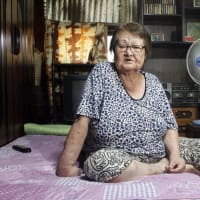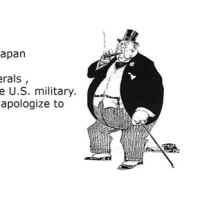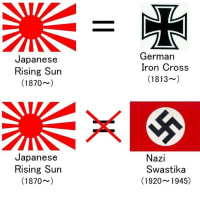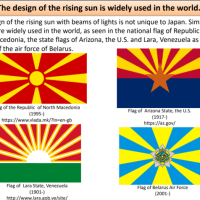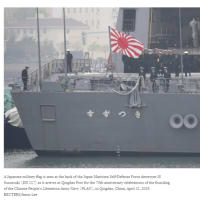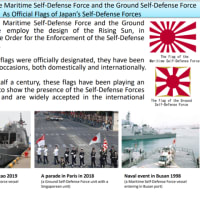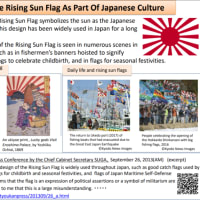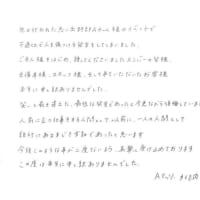民主党代表選 大連立への道筋を主要争点に(8月16日付・読売社説)
大連立は読売の念願なのか、この話題をよく取り上げる。しかし、どうでもいいことだ。仮に扱うとしても、訃報と同じ程度の扱いでいい。
読売は、例えば、国際的に問題になっている子供の連れ去りについて、連れ去った日本人母の取材もしないで、アメリカの高官の意向を垂れ流す。新聞社が取材しないで、役人の言葉を垂れ流し機関になったら、一体新華社とどこか違うのかと思う。(しかも、日本の保守新聞はなぜかアメリカの高官の意向の口になっている場合がある。)
で、毎日、
社説:大連立論議再燃 実現性と大義はあるか
産経
大連立構想 基本政策抜きなら談合だ
がつられてーー読売とは反対の意見だがーーーこの話題。
少子高齢化、財政危機など日本が長年抱える大問題があるのは、各社新聞社も認めるところだろう。
忍び寄る危機を見逃して、あるいは、問題を座視し、くだらん政局に眼を奪われていては今回の原発事故と同じ過ちを犯してしまうことになる。
例えば、保育園の状況はどうなのか、労働人口問題に直結する女性・年齢差別の問題はどうなっているのか、移民の受け容れ体制はどうなのか、海外移転する企業をどう引き留めるかーーーなどなど、現場の人たち、あるいは、専門家、あるいは議員に取材して問題提起、あるいは解決への尻叩きをする報道の仕事は山ほどあるはずだ。
社会問題がそのまま政治問題にからんでくる。
将来日本を駄目にした人々を選ぶとしたら、議員と共に不作為の共犯として、メディアもその中の一つにはいるだろう。
渡辺 謙 アメリカを行く "9.11テロ"に立ち向かった日系人 | NHK
これみたが、それほど面白くなかった。
ノーマンミネタ氏の9.11当時の勇気とご苦労はわかった。
アラブ系のレイシャルプロファイリングに反対したが、その反対については、周囲から非難ごうごうだったわけですね。
Mineta’s Folly
それで、交通の安全のために、アラブ系だけではなく、テロの疑いのある人すべてを対象とするTSAを設立したわけだ。
これはこれで筋が通っているし、正しかったのだと思う。
ところが、TSAに関しては、現在かなり不評であり、また、この体制下でもレイシャルプロファイリングがあるのではないか、と言われている。
日系人達の戦時中の苦境にしても他のドキュメンタリー番組の方がつっこんだ扱いをしていたように思う。
中国軍技術者、米最新鋭機残骸を調査…パキスタン
BBC
15 August 2011 Last updated at 09:37 GMT Share this pageEmailPrint
62
ShareFacebookTwitter
Bin Laden raid: China 'viewed US helicopter wreckage'
の報道では、
中国パキスタン側は否定している、ということ、
この嫌疑は、パキスタンの高官が中国を墜落現場へよぶことを議論したの盗聴した会話がもとになっているともいわれている。
日本の議員さんなんかもここらへんは注意したほうがいいですな。
Norway’s Jewish obsession
Op-ed: Jews, Holocaust continue to play central role in Norway’s public discourse
Manfred Gerstenfeld
Published: 08.14.11, 18:24
ノルウエーの事件。その背景にムスリムの人達が、戦前のユダヤ人と同じように扱われていると表した議員に対して、比較にならない、ユダヤ人に対する態度はもっとひどかった、というわけだが、それでも、雇用、やナイトクラブへの入店お断り、外国人扱いの質問などはあるようである。
(外国人お断り)
Wabanaki, State of Maine, Team Up to Stop Abuse of Indian Foster Children
By Gale Courey Toensing August 15, 2011
アメリカ、メイン州
アメリカインディアンとの和解の過程。
子供のころ突然役人がやってきて、養護院につれていかれ、そこで虐めををうける。
児童虐待に関しては、アメリカインディアンの親から受ける場合についで、州や群などの施設でうけるものも多い、と。
"Honor Culture" Linked to Accidental Deaths
By KIM CAROLLO (@kimcarollo)
Aug. 15, 2011
名誉を重んじる文化では事故死が多い、と。なんのことかと思ったら、
評判を気にして、タフで恐れを知らない漢と見られたい欲求がつよいと、シートベルトやヘルメットをしないから事故死が多くなるのでは、と。
暴走族のあんちゃんみたいなかんじかな?あれも一種のhonor culture なのかね?
大連立は読売の念願なのか、この話題をよく取り上げる。しかし、どうでもいいことだ。仮に扱うとしても、訃報と同じ程度の扱いでいい。
読売は、例えば、国際的に問題になっている子供の連れ去りについて、連れ去った日本人母の取材もしないで、アメリカの高官の意向を垂れ流す。新聞社が取材しないで、役人の言葉を垂れ流し機関になったら、一体新華社とどこか違うのかと思う。(しかも、日本の保守新聞はなぜかアメリカの高官の意向の口になっている場合がある。)
で、毎日、
社説:大連立論議再燃 実現性と大義はあるか
産経
大連立構想 基本政策抜きなら談合だ
がつられてーー読売とは反対の意見だがーーーこの話題。
少子高齢化、財政危機など日本が長年抱える大問題があるのは、各社新聞社も認めるところだろう。
忍び寄る危機を見逃して、あるいは、問題を座視し、くだらん政局に眼を奪われていては今回の原発事故と同じ過ちを犯してしまうことになる。
例えば、保育園の状況はどうなのか、労働人口問題に直結する女性・年齢差別の問題はどうなっているのか、移民の受け容れ体制はどうなのか、海外移転する企業をどう引き留めるかーーーなどなど、現場の人たち、あるいは、専門家、あるいは議員に取材して問題提起、あるいは解決への尻叩きをする報道の仕事は山ほどあるはずだ。
社会問題がそのまま政治問題にからんでくる。
将来日本を駄目にした人々を選ぶとしたら、議員と共に不作為の共犯として、メディアもその中の一つにはいるだろう。
渡辺 謙 アメリカを行く "9.11テロ"に立ち向かった日系人 | NHK
これみたが、それほど面白くなかった。
ノーマンミネタ氏の9.11当時の勇気とご苦労はわかった。
アラブ系のレイシャルプロファイリングに反対したが、その反対については、周囲から非難ごうごうだったわけですね。
Mineta’s Folly
Norman Mineta may not necessarily be the least impressive Bush cabinet secretary, but he is certainly the most dangerous.
January 10, 2002
・・・・・
Asked on 60 Minutes if a 70-year-old white woman from Vero Beach should receive the same level of scrutiny as a Muslim from Jersey City, Mineta said, "Basically, I would hope so." Asked if he could imagine any set of circumstances that would justify ethnic and racial profiling, Mineta said "absolutely not."
それで、交通の安全のために、アラブ系だけではなく、テロの疑いのある人すべてを対象とするTSAを設立したわけだ。
これはこれで筋が通っているし、正しかったのだと思う。
ところが、TSAに関しては、現在かなり不評であり、また、この体制下でもレイシャルプロファイリングがあるのではないか、と言われている。
日系人達の戦時中の苦境にしても他のドキュメンタリー番組の方がつっこんだ扱いをしていたように思う。
中国軍技術者、米最新鋭機残骸を調査…パキスタン
BBC
15 August 2011 Last updated at 09:37 GMT Share this pageEmailPrint
62
ShareFacebookTwitter
Bin Laden raid: China 'viewed US helicopter wreckage'
の報道では、
It's just speculation. It's all false. The wreckage was handed back
中国パキスタン側は否定している、ということ、
One source said the US case came mostly from intercepted conversations in which Pakistan officials discussed inviting the Chinese to visit the crash site.
この嫌疑は、パキスタンの高官が中国を墜落現場へよぶことを議論したの盗聴した会話がもとになっているともいわれている。
日本の議員さんなんかもここらへんは注意したほうがいいですな。
Norway’s Jewish obsession
Op-ed: Jews, Holocaust continue to play central role in Norway’s public discourse
Manfred Gerstenfeld
Published: 08.14.11, 18:24
After the despicable Breivik murders, the Norwegian obsession with Jews continues unabated. Earlier this month Erna Solberg, leader of the major opposition party, the Conservatives, gave an interview to the country’s largest paper Verdens Gang. She claimed that nowadays, Muslims in Norway are treated like Jews were in the 1930s. Solberg gave as examples discrimination in the job market, non-admission to nightclubs, claims that they are not really Norwegians and are frequently asked where they come from originally. She added that many individual Muslims are held collectively responsible for the actions of any Muslim.
Solberg implicitly admitted that her comparison was largely false, stating herself that Muslims today are not subject to brutal repression as Jews were in the 1930s. She also conveniently ignored that the Norwegian authorities encourage Muslim participation in society. Muslims also play a significant role in Norwegian politics.
ノルウエーの事件。その背景にムスリムの人達が、戦前のユダヤ人と同じように扱われていると表した議員に対して、比較にならない、ユダヤ人に対する態度はもっとひどかった、というわけだが、それでも、雇用、やナイトクラブへの入店お断り、外国人扱いの質問などはあるようである。
(外国人お断り)
Wabanaki, State of Maine, Team Up to Stop Abuse of Indian Foster Children
By Gale Courey Toensing August 15, 2011
アメリカ、メイン州
アメリカインディアンとの和解の過程。
The decades-old memories are blurred around the edges, but Altvater remembers the day they were taken. “They showed up with big station wagons and they came in and took all our clothes in big garbage bags and put us in the station wagons and drove away―they were state workers,” Altvater says, adding that no one had told them they were going to be taken away from their home. “I don’t even remember if my mother was there. Nobody said anything the entire ride. Nobody talked to us. When we were little on Pleasant Point we didn’t have any cars. We were surrounded on three sides by water. We didn’t have TV or running water or bathrooms back then. We were very isolated so when they took us it was terrifying. We didn’t even know the road went that far and they just kept driving and driving and driving till they got us to this great big house in Old Town.”
In foster care, she was repeatedly abused, Altvater says. No charges were ever brought against the couple that abused her. “In this [truth and reconciliation] process I’ve always used my maiden name, Yarmal, because I think my two [deceased] sisters need to be remembered, and had we not gone through what we did, they would be alive today,” says Altvater. When Altvater joined the working group she says she was filled with mistrust, anger and fear. “I came as an adult with childhood memories of all the torture and abuse I suffered as a young child, as a little girl.”
子供のころ突然役人がやってきて、養護院につれていかれ、そこで虐めををうける。
The invisible wall surrounding the abuse and neglect of Indian children continues to exist although improvements have been made in the system. One of the difficulties is collecting information, according to a study by the National Indian Child Welfare Association. At best, only 61 percent of the data on abuse and/or neglect of American Indian and Alaska Native children, which often leads to foster care, are reported. The primary investigators of abuse or neglect at the tribal level are the tribes themselves (65 percent), followed by the states (42 percent), the counties (21 percent), the Bureau of Indian Affairs (19 percent) and other sources (nine percent), the report says. It is clear, however, that Indian children are disproportionately represented in foster care compared to their representation in the total U.S. populations: American Indian children make up one percent of the U.S. population, but comprise two percent of the foster-care population, according to research by the Pew Commission on Children in Foster Care.
児童虐待に関しては、アメリカインディアンの親から受ける場合についで、州や群などの施設でうけるものも多い、と。
"Honor Culture" Linked to Accidental Deaths
By KIM CAROLLO (@kimcarollo)
Aug. 15, 2011
名誉を重んじる文化では事故死が多い、と。なんのことかと思ったら、
Researchers from the University of Oklahoma define the culture of honor as "a characteristic of societies that place special emphasis on the aggressive defense of reputation," and data from two studies suggest their desire to be seen as tough and fearless might lead them to engage in risky behaviors that lead to accidental deaths.
"White males living in non-metropolitan areas in the U.S. in honor states are more prone to accidental deaths," said Ryan Brown, a study co-author and associate professor of social psychology at the University of Oklahoma in Norman. "They may be living with reckless abandon -- by not wearing a seat belt or a helmet, for example -- as a way of demonstrating they are tough and brave."
評判を気にして、タフで恐れを知らない漢と見られたい欲求がつよいと、シートベルトやヘルメットをしないから事故死が多くなるのでは、と。
暴走族のあんちゃんみたいなかんじかな?あれも一種のhonor culture なのかね?










